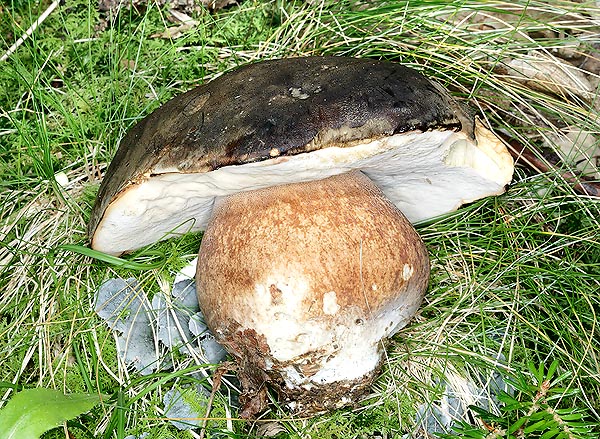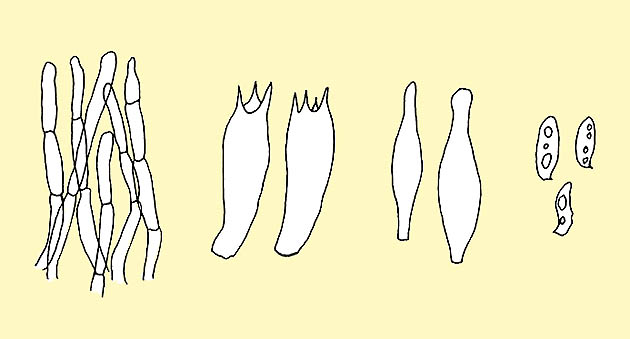
Text © Loredana Battisti

English translation by Mario Beltramini

Blackish, bronzy cap, but also paler. Choice edible, cooked or raw © Giuseppe Mazza
Family: Boletaceae Chevalier.
Subfamily: Boletoideae Singer.
Genus: Boletus Dillenius: Fries.
Section: Edules Fries.
Boletus aereus Bulliard : Fries 1821.
The name comes from the Latin “aes-aeris” = bronze, due to the colour of the cap.
The genus Boletus is characterized by mushrooms with hymenophore (structure containing the fertile part of the mushroom, the hymenium, where the production of the spores takes place), formed by tubules and pores which can be easily loosened from the underlying flesh of the cap. The section Boletus usually gathers sturdy species, with persistently white flesh, stem with a net, the hymenophore shows a white colouring in the young specimen, yellow when ripe, and olive-green when aged (like the colour of the spore print).
Cap: of medium and big size, from 5-10 (30) cm, fleshy, initially hemispheric then convex, finally flat, slightly overhanging margin, dry cuticle, finely velvety in the young specimen, without decorations, shows a bistre-brown colouring to assume a blackish “bronzy” tone, but also paler colourings can be found.
Hymenophore: very small tubules, long, adnate, thick, from white to yellow to olive-green with the ripening of the spores, easily loosening from the flesh of the cap, non staining at the cut; small pores concolorous to the tubules, non staining when touched.
Stem: 5-18 (20) x 5-12 cm, firm and sturdy, from obese to barrel-shaped, rounded, bulbous, of brown colour, always paler than the cap, shows a concolorous to the cap small net, which extends mostly on the upper part.

Boletus aereus: cuticle, basidia, cistydia and spores © Pierluigi Angeli
Flesh: white, firm, compact and non staining. Fungous smell and taste.
Chemical reactions: the flesh, when in contact with strong bases such as the KOH (potassium hydroxide) and NaOH (sodium hydroxide), assumes a more or less brown colouring.
Spores: spindle-shaped, smooth, 13-16 x 4-5 µm.
Habitat: only in latifolious woods, especially oaks, but also chestnut, purely xerophytic species, loving the warm and dry locations, much more infrequent in the north whilst it is more common in the Mediterranean and Apennine zones. The growth takes place in autumn.
Edibility: excellent; even raw, if consumed in small quantities.
Notes: easily to identify species due to the colour bistre brown of the cap, stem with brown net, persistently white flesh.
Remarks: a possible confusion might happen with the boletes of the same section, the distinction with dark forms of Boletus aestivalis becomes difficult, but the net of the last one extends all over the stem, whilst it differs quite well from the Boletus edulis, which shows a cuticle always rather greasy-viscous and paler margin of the cap, white net of the stem; Boletus pinophilus shows a vinous-reddish colouring on the cap with concolorous net.
→ For general notions about Fungi please click here.
→ To appreciate the biodiversity of MUSHROOMS please click here.
